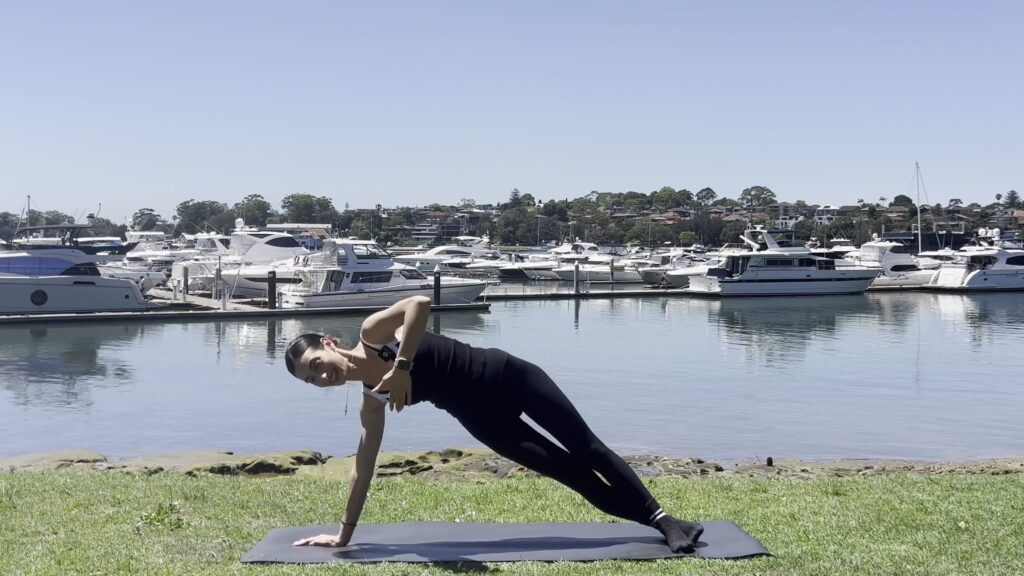
A strong core is the foundation of good posture, better movement, and injury prevention. While many fitness methods promise core strength, few are as precise, effective, and accessible as Pilates core exercises. At Pilates Classes Online, we’ve curated ten essential moves that target the deep core muscles, helping you build strength, control, and alignment — all from home.
Whether you’re new to Pilates or looking to upgrade your routine, these Pilates core exercises will help you feel the burn and see results. Let’s dive in.
Why Pilates Core Exercises Work
Unlike traditional ab workouts that often rely on momentum or repetitive crunching, Pilates Core exercises engage the entire trunk, including the deep abdominal muscles, pelvic floor, and spinal stabilizers. This means you’re not just building a six-pack — you’re building functional strength that supports your entire body.
Pilates teaches you how to move with intention, focusing on breath, control, and precision. These elements work together to improve your strength, posture, flexibility, and overall performance — whether you’re on the mat or in daily life.
For more insight into how Pilates supports your core and spine, Cleveland Clinic explains it well.
10 Pilates Core Exercises You Need in Your Routine
Each move below can be performed on the mat and modified to suit your level. Aim to perform 8–12 reps of each, moving slowly and mindfully.
- The Hundred
Why It Works: A foundational move in Pilates, The Hundred increases core endurance and warms up the body.
How to Do It:
Lie on your back, lift your legs to a tabletop or extended position, and hover your arms beside your hips. Pump your arms up and down as you inhale for 5 counts and exhale for 5 counts. Complete 10 cycles for 100 pulses.
- Single-Leg Stretch
Why It Works: Targets the rectus abdominis while coordinating breath and movement.
How to Do It:
Lie on your back, head and shoulders lifted, knees bent. Hug one knee to your chest while extending the opposite leg. Switch legs while inhaling and exhaling with control.
- Criss-Cross
Why It Works: Builds strength in the obliques and improves rotational stability.
How to Do It:
With your hands behind your head and legs in tabletop, rotate your torso as you bring the opposite elbow to your knee. Extend the other leg out. Switch sides with control.
- Roll-Up
Why It Works: Strengthens the entire front body, including the core and hip flexors, while improving spinal mobility.
How to Do It:
Lie flat, arms overhead. Inhale to begin rolling up one vertebra at a time, exhale as you reach forward. Reverse the movement to roll back down with control.
- Double Leg Stretch
Why It Works: Challenges core stability while limbs move independently.
How to Do It:
Start in a tight ball position. Extend arms and legs out simultaneously, then circle the arms around as you return to start.
- Plank with Leg Lift
Why It Works: Adds intensity by activating both the transverse abdominis and glutes.
How to Do It:
Hold a plank on forearms or hands. Lift one leg off the ground without shifting the hips. Alternate sides.
- Side-Lying Leg Lift
Why It Works: Targets the obliques and lateral stabilizers, key for overall core strength.
How to Do It:
Lie on your side, legs extended. Lift both legs off the mat while keeping your body stable. Lower and repeat.
- Teaser
Why It Works: Engages multiple muscle groups while testing coordination and control.
How to Do It:
From a lying position, lift your upper and lower body into a V-shape, reaching your arms toward your toes. Hold and lower slowly.
- Swimming
Why It Works: Strengthens the posterior chain and improves spinal extension — an often neglected part of the core.
How to Do It:
Lie on your stomach, arms extended overhead. Lift opposite arms and legs in a fluttering motion while keeping your core engaged.
- Dead Bug
Why It Works: Promotes spinal stability and coordination between limbs.
How to Do It:
Lie on your back with arms and legs in the air. Lower the opposite arm and leg while maintaining core control. Return to start and switch sides.
How to Incorporate These Pilates Core Exercises
You can create a full Pilates Core workout using these moves, or sprinkle them into your weekly routine. A typical sequence might look like:
• The Hundred (warm-up)
• Single-Leg Stretch
• Criss-Cross
• Roll-Up
• Double Leg Stretch
• Plank with Leg Lift
• Teaser
• Swimming
• Dead Bug
• Side-Lying Leg Lift (finisher)
Want a done-for-you weekly Pilates plan with video guidance? Explore our Pilates Classes Online Membership — designed for all levels with flexible schedules.
Tips for Maximizing Results
• Use breath to drive movement. Inhale to prepare, exhale to engage your core.
• Slow it down. Precision matters more than speed in Pilates.
• Stay consistent. Even 10–15 minutes a day can yield noticeable results.
• Pair with nutrition. Fuel your body with whole, anti-inflammatory foods. Check out our nutrition and Pilates blog .
Final Thoughts
Whether your goal is to improve posture, recover from injury, or simply feel stronger from the inside out, Pilates Core exercises offer unmatched results. These 10 foundational moves are a great place to begin — or elevate — your training journey.
Looking for more Pilates tutorials, mobility sessions, and mindful movement tips? Join us at Pilates Classes Online and experience strength that sticks.